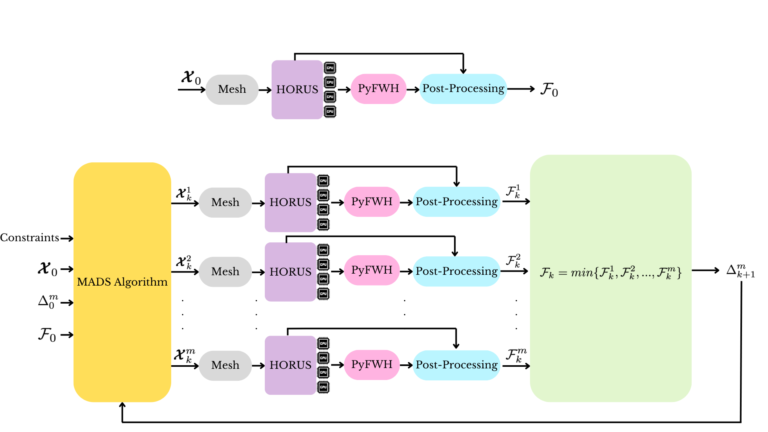Creating Digital Twins Using Physics-Informed Neural Networks

This research, conducted at the Laboratory of Multiscale Mechanics (LM2) at Polytechnique Montreal in collaboration with Maya HTT and Hydro-Quebec, aims to develop a methodology combining traditional finite element methods (FEM) with advanced physics-informed neural networks (PINNs). Further details on this research will become available through scientific journal publications and conference presentations.
Aeroacoustic Shape Optimization
An aeroacoustic shape optimization framework was developed using the gradient-free Mesh Adaptive Direct Search (MADS) algorithm and high-order Large Eddy Simulation (LES) to minimize aviation noise. Aerodynamic analysis was conducted using the Discontinuous Galerkin (DG) method, implemented through the Flux Reconstruction (FR) framework. Aeroacoustic computations can be performed directly with the flow solver or using an acoustic solver based on the Ffowcs Williams and Hawkings (FW-H) formulation as a post-processing tool. Read more about this research.
Aerodynamics and Aeroacoustic Design of an eVTOL

I contributed to the conceptual and preliminary design of a 7-seater fully electric Vertical Take-Off and Landing (eVTOL) aircraft, which led to the manufacturing and experimental testing of 1/10 and 1/4 scale models. At Limosa, I developed a low-fidelity propeller design and optimization framework (PrOpt) to improve propeller performance and created Python scripts to automate the design cycle.
Stabilizing Highly Under-Resolved Problems

This work focuses on optimizing filtering parameters to stabilize high-order large eddy simulations (LES) while preserving accuracy. To address the non-linear instabilities that often occur in unstructured flow simulations, a time-step-independent exponential filter was developed, specifically targeting high-frequency modes to reduce oscillations without sacrificing solution accuracy. After running over 14,000 simulations, the optimal filtering parameters were identified, enabling stable and accurate results. These results demonstrate improved stability with minimal loss in accuracy, suggesting strong potential for robust high-order simulations in industrial applications. If you’re interested in the topic, you can read more in our paper published in Computers & Fluids and watch the simulation animations here.

